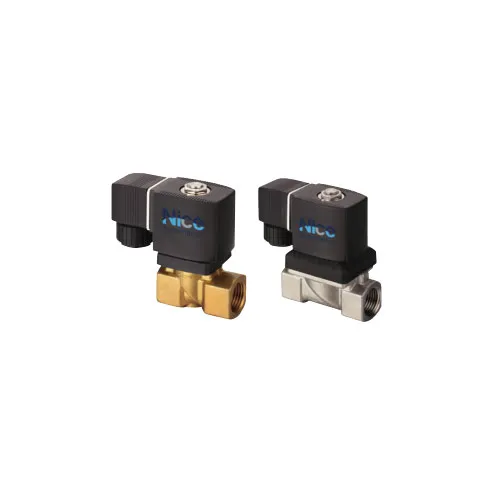How Does a Solenoid Valve Work?
2024-12-03
A solenoid valve is an electromechanical device that controls the flow of a fluid (liquid or gas) by using an electrical current to actuate a valve mechanism. Here's a step-by-step explanation of its operation:
1. Resting State
- Without Electrical Current (De-energized):
In its default position, the valve is either closed or open, depending on its design (normally closed or normally open):
- Normally Closed (NC): The valve blocks fluid flow.
- Normally Open (NO): The valve allows fluid to flow.
2. Electrical Current Activation
- Electrical Current Applied (Energized):
When an electric current passes through the solenoid coil, it generates a magnetic field.

3. Magnetic Field Generation
- The magnetic field pulls the plunger or core (a movable ferromagnetic part) inside the solenoid coil.
- This movement depends on the valve's design:
- In a Normally Closed Valve: The plunger moves upward, lifting a seal or opening, allowing fluid to flow through the valve.
- In a Normally Open Valve: The plunger moves downward, pressing a seal or closing an opening, stopping the fluid flow.
4. Fluid Passage Control
- The movement of the plunger directly or indirectly opens or closes the valve's orifice (passage).
- The sealing elements (such as rubber or metal) ensure that the valve creates a tight seal to prevent leaks.
5. Maintained Flow State
- As long as the solenoid remains energized (current is applied), the plunger stays in its actuated position.
- Fluid continues to flow or remains blocked, depending on the valve configuration.
6. Electrical Current Deactivation
- Electrical Current Removed (De-energized):
When the current stops, the magnetic field dissipates.
7. Return to Resting State
- A spring inside the valve pushes the plunger back to its default position:
- In a Normally Closed Valve: The plunger moves downward, blocking fluid flow.
- In a Normally Open Valve: The plunger moves upward, allowing fluid flow.
Step-by-Step Summary for a Normally Closed Valve
1. Resting State: Valve is closed, no flow.
2. Energized: Electric current energizes the solenoid coil.
3. Magnetic Field: Magnetic field pulls the plunger upwards.
4. Flow Starts: The orifice opens, allowing fluid to pass.
5. De-energized: Electric current stops; magnetic field collapses.
6. Resting State: Spring pushes the plunger down, closing the orifice and stopping the flow.
Applications
- Water Control: Irrigation systems, washing machines.
- Air Control: Pneumatic systems, compressors.
- Oil and Gas: Refining and processing equipment.
- Medical Devices: Fluid management in diagnostic tools.
Solenoid valves are versatile, efficient, and widely used across industries due to their reliability and precision in controlling fluid flow.


